Experience the Magic of Olympic Park: Top Attractions You Can’t Miss
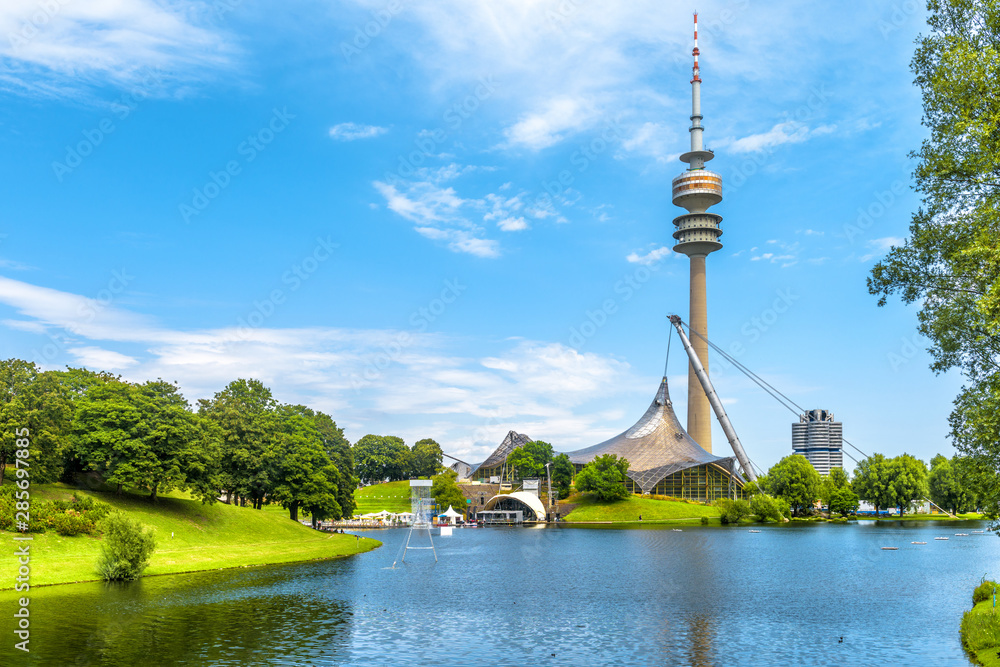
An Essential Guide to Visiting Olympic_Park
Nestled in the heart of Beijing, Olympic Park (奥林匹克公园) is a vibrant testament to the spirit of international unity and sporting excellence. Originally built for the spectacular 2008 Summer Olympics, this sprawling urban oasis has transformed into a multifaceted destination that attracts millions of visitors from around the globe. Whether you’re an avid sports fan, a lover of architecture, or simply seeking a serene escape from the city’s hustle and bustle, Olympic Park offers something for everyone.
As you stroll through its vast expanses, you’ll encounter iconic structures such as the Bird’s Nest (National Stadium) and the Water Cube (National Aquatics Center), both remarkable feats of modern engineering and design. These architectural marvels are not just beautiful to behold; they also serve as venues for various cultural events and exhibitions. Surrounding these landmarks is a lush landscape of gardens, lakes, and recreational areas that invite leisurely exploration and relaxation.
Visiting Olympic Park is an experience that goes beyond appreciating its aesthetic beauty; it’s an opportunity to immerse yourself in the legacy of the Games and the cultural significance they hold. From engaging in sports activities to enjoying outdoor performances, your adventure at Olympic Park is sure to be filled with memorable moments. So lace up your walking shoes, grab your camera, and prepare to discover the magic of Olympic Park—where the spirit of the Olympics lives on!
In This Guide
- An Essential Guide to Visiting Olympic_Park
- The Rich History and Legends of Olympic_Park
- Main Highlights: What You Absolutely Can’t Miss
- Planning Your Visit: A Practical Guide
- Tickets: Prices, Booking, and Tips
- How to Get There: A Complete Transportation Guide
- Local Cuisine and Accommodation Nearby
- Frequently Asked Questions
- Final Thoughts on Your Trip
The Rich History and Legends of Olympic_Park
Nestled in the heart of Beijing, Olympic Park (奥林匹克公园) is a vibrant testament to the city’s modern architectural prowess and rich cultural heritage. The park was originally constructed for the 2008 Summer Olympics, an event that not only transformed the landscape but also marked a significant moment in China’s global emergence. The vision behind Olympic Park was to create a multifaceted space that would host a variety of sports, cultural events, and recreational activities, all while showcasing the beauty of contemporary Chinese design.
The centerpiece of the park is the iconic Bird’s Nest Stadium (鸟巢), designed by the renowned Swiss architecture firm Herzog & de Meuron. This architectural marvel, with its intricate steel framework, is symbolic of both the Olympics and the spirit of innovation. It was here that history was made with unforgettable moments, like Usain Bolt’s record-breaking sprints and Michael Phelps’ unparalleled swimming feats. The stadium continues to be a focal point for major events, concerts, and exhibitions, drawing visitors from around the world.
Adjacent to the Bird’s Nest is the Water Cube (水立方), the National Aquatics Center, which is equally famous for its bubble-like exterior and state-of-the-art facilities. This structure not only served as a venue for thrilling aquatic competitions but has since been transformed into a popular water park, adding a playful element to the park’s offerings. The juxtaposition of these two architectural giants creates a stunning visual narrative, representing both the past and future of China’s sporting legacy.
Beyond the structures, Olympic Park is steeped in legends and stories that resonate with visitors. The park is home to the Olympic Forest Park, a lush expanse designed to symbolize peace and harmony. It serves as a reminder of the Olympic spirit, promoting friendship among nations and encouraging a healthy lifestyle through its walking trails and recreational areas. As you stroll through the park, you may encounter sculptures and installations that reflect China’s history and ethos, making each visit an opportunity to connect with the country’s rich cultural tapestry.
Since the Olympics, the park has evolved into a vibrant public space, where locals and tourists alike gather for leisure, sports, and cultural events. Its wide-open spaces and scenic views offer a refreshing retreat from the bustling city life, while the legacy of the games is preserved in the hearts and memories of those who experienced its grandeur.
Today, Olympic Park stands not only as a symbol of sporting excellence but also as a testament to Beijing’s ambition and innovation. Whether you’re exploring its architectural wonders, participating in a local event, or simply enjoying a leisurely walk among the trees, the park invites you to become part of its ongoing story—a story that celebrates the intersection of history, culture, and the enduring spirit of the Olympic Games.
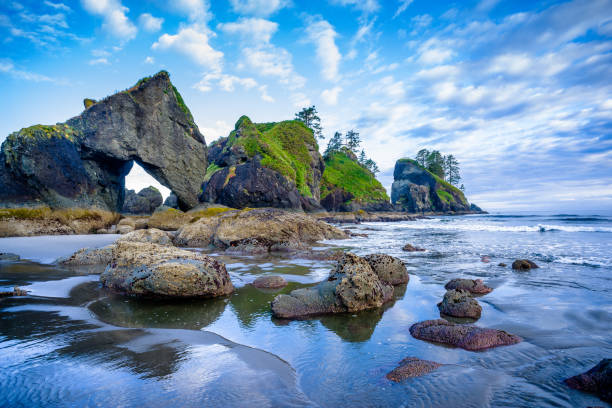
Olympic_Park.
Main Highlights: What You Absolutely Can’t Miss
When visiting Olympic Park, a world of natural beauty and adventure awaits. From breathtaking vistas to unique ecosystems, there are several highlights that you absolutely cannot miss. Here’s a curated selection of must-see attractions and activities to make your trip unforgettable.
Hurricane Ridge
This stunning vantage point offers panoramic views of the Olympic Mountains and valleys. Accessible by car, Hurricane Ridge is popular for its hiking trails, snowshoeing in winter, and breathtaking sunsets. Be sure to hike the Hurricane Hill Trail for an easy yet rewarding experience, showcasing the best of the region’s beauty.
Hoh Rain Forest
Step into one of the largest temperate rain forests in the United States. The Hoh Rain Forest is a magical place, teeming with unique flora and fauna. Explore the Hall of Mosses trail, a short loop that immerses you in the lush greenery and enchanting atmosphere. Keep your eyes peeled for Roosevelt elk as you wander through this serene landscape.
Lake Crescent
This glacially-carved lake is known for its stunning blue waters and surrounding mountain scenery. Ideal for kayaking, swimming, and hiking, Lake Crescent offers various recreational opportunities. Don’t miss the historic lodge at its eastern edge, which provides a cozy spot to relax after a day of adventure.
Sol Duc Falls
A highlight for many visitors, Sol Duc Falls is a beautiful waterfall that can be easily accessed via a 1.6-mile trail. The sound of rushing water and the sight of the cascading falls make this spot a perfect location for a picnic or simply soaking in the natural beauty.
Rialto Beach
The rugged coastline at Rialto Beach is a photographer’s dream. With dramatic rock formations, scattered driftwood, and breathtaking views of the Pacific Ocean, this beach is perfect for a leisurely stroll. Don’t forget to explore the nearby Hole in the Wall rock formation during low tide for a unique experience.
Obstruction Point Trail
For those seeking adventure, the Obstruction Point Trail offers some of the most awe-inspiring scenery in the park. While the full trail spans 14 miles, even a short hike will reward you with stunning vistas of mountain lakes and alpine meadows. This trail is particularly stunning in late summer when wildflowers are in full bloom.
Mount Storm King
This challenging hike is not for the faint of heart, but the views from the summit are worth every step. Ascend 2,100 feet over 4 miles to reach a viewpoint that overlooks Lake Crescent and the surrounding mountains. Prepare for an invigorating adventure that will leave you breathless in more ways than one.
Deer Park
For solitude and stunning vistas, Deer Park is a hidden gem within Olympic Park. Accessible by a gravel road, this high-elevation area offers peaceful camping and hiking opportunities. Take a short hike to the summit of Blue Mountain for breathtaking views across the Strait of Juan de Fuca.
Stargazing
Olympic Park is renowned for its dark skies, making it an exceptional location for stargazing. Spend a night at Deer Park or any of the park’s high points, and prepare to be mesmerized by the expansive night sky filled with stars.
Whale Watching
If your visit aligns with the migration seasons, take the opportunity to go whale watching. The waters off the coast of Olympic Park are home to gray whales, orcas, and humpback whales. Various tour operators offer excursions that allow you to witness these magnificent creatures in their natural habitat.
With these highlights, your visit to Olympic Park will be filled with breathtaking sights and unforgettable experiences. Whether hiking, relaxing by a lake, or exploring lush forests, this natural wonderland promises adventure for every traveler.
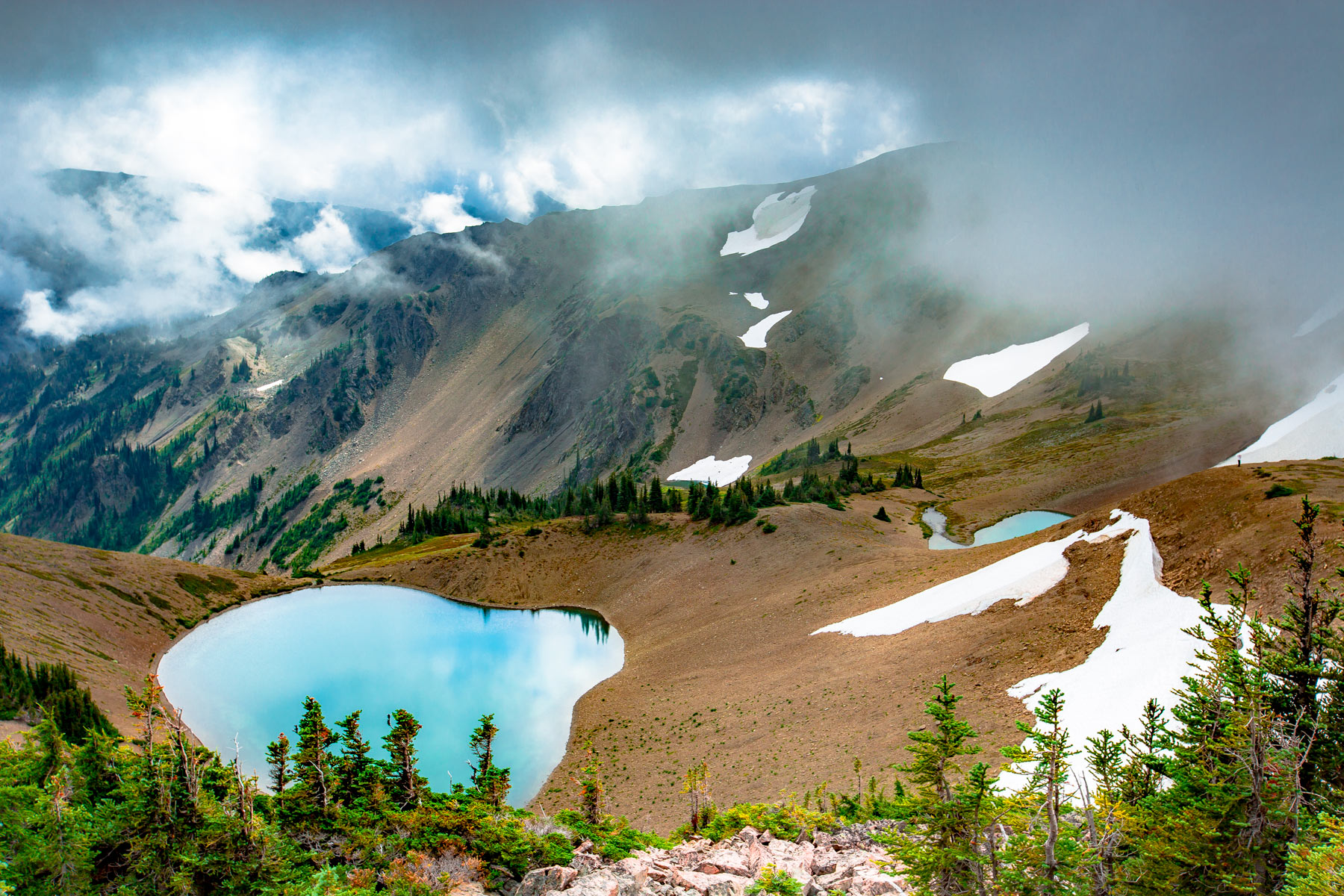
Olympic_Park.
Planning Your Visit: A Practical Guide
Visiting Olympic Park (奥林匹克公园) is an adventure filled with breathtaking landscapes, diverse ecosystems, and a plethora of outdoor activities. To ensure that your trip is as enjoyable and seamless as possible, here’s a comprehensive practical guide to help you plan your visit.
Best Time to Visit
The ideal time to explore Olympic Park is during the summer months (June to August) when the weather is warm, and the wildflower meadows burst into vibrant colors. If you’re particularly interested in seeing wildflowers, plan your visit for the first two weeks of August. However, each season offers its own unique beauty, so consider visiting in the fall for stunning foliage or winter for a serene, snow-covered landscape.
Getting There
Olympic Park is located in Beijing, China, easily accessible via public transportation or private vehicle. The nearest airport is Beijing Capital International Airport (PEK), which is approximately 30 kilometers away. From the airport, you can take a taxi or arrange for a shuttle service to the park.
If you’re using public transportation, the Beijing subway is a convenient option. Take Line 8 to Olympic Park Station, which is just a short walk from the park entrance. Buses also serve the area, with multiple routes connecting to major parts of the city.
Entrance Fees
Entrance to Olympic Park is generally free, but certain attractions within the park, such as museums or special exhibitions, may charge an admission fee. Be sure to check ahead of time for any costs associated with the specific sites you wish to visit.
Navigating the Park
Olympic Park is vast, covering an area of 1.2 square kilometers. To make the most of your visit, consider grabbing a map at the entrance or downloading a digital version beforehand. Key points of interest include:
- Bird’s Nest (National Stadium): A stunning architectural marvel, this venue hosted the opening and closing ceremonies of the 2008 Olympics.
- Water Cube (National Aquatics Center): Known for its unique bubble-like design, it now serves as a water park and sports venue.
- Olympic Forest Park: A beautiful green space perfect for leisurely walks, cycling, or picnicking.
Activities to Enjoy
Olympic Park offers a variety of activities for visitors of all ages:
- Sightseeing: Marvel at the iconic structures and take photos in front of the Bird’s Nest and Water Cube.
- Biking: Rent a bike to explore the park’s extensive pathways while enjoying the scenic views.
- Cultural Experiences: Check out exhibitions and performances that celebrate Chinese culture and history, often hosted in the park’s various venues.
- Relaxing in Nature: Take a leisurely stroll through the Olympic Forest Park, where you can enjoy the tranquil surroundings and observe local wildlife.
Dining Options
While there are several cafes and food stalls within Olympic Park, consider venturing outside for a broader selection of dining experiences. The nearby Sanlitun area offers a range of international and local cuisines, from street food to upscale restaurants.
Tips for a Smooth Visit
- Plan Ahead: Research the specific attractions you want to see and their opening hours.
- Dress Comfortably: Wear comfortable shoes, as you’ll likely be walking quite a bit.
- Stay Hydrated: Carry a water bottle, especially during the warmer months, to stay refreshed.
- Check the Weather: Be prepared for changes in weather, particularly if you’re visiting during the shoulder seasons of spring or autumn.
- Visit Early: To avoid crowds, consider arriving early in the day.
Conclusion
With its rich history, stunning architecture, and beautiful natural landscapes, Olympic Park is a must-visit destination for anyone traveling to Beijing. By planning ahead and knowing what to expect, you can make the most of your time in this iconic park. Whether you’re there for a day of sightseeing or a leisurely stroll in the gardens, the memories you create at Olympic Park will surely last a lifetime.
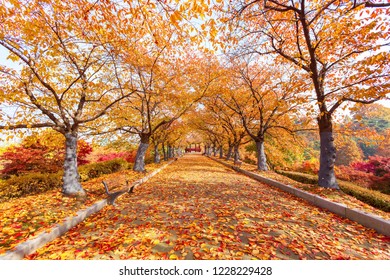
Olympic_Park.
Tickets: Prices, Booking, and Tips
When planning your visit to Olympic Park (奥林匹克公园), it’s essential to know the ins and outs of ticket prices, booking options, and some handy tips to enhance your experience.
Ticket Prices
Admission to Olympic Park is typically free, making it an accessible destination for all travelers. However, specific areas, such as the Olympic National Park Visitor Center and certain special events, may charge a fee. It’s wise to check the official website for any seasonal changes or special access fees.
Booking Options
While no advance ticketing is required for general access to the park, if you’re planning to participate in ranger-led programs, guided tours, or camping, it’s a good idea to make reservations ahead of time. Popular campsites fill up quickly, especially during the peak summer season. Reservations for campgrounds can usually be made through the National Park Service’s website or by calling the park directly.
If you’re interested in staying near the park, consider booking accommodations in advance, as nearby hotels and lodges can sell out during busy travel periods. Websites like Booking.com or Airbnb offer various options to suit different budgets.
Tips for a Smooth Visit
-
Best Time to Visit: The summer months (June to September) offer the best weather and the most activities. If you’re interested in wildflowers, aim for early August when the meadows are in full bloom.
-
Arrive Early: To beat the crowds, especially at popular spots like Hurricane Ridge and Sol Duc Falls, plan to arrive early in the day.
-
Check Conditions: Weather can change rapidly in Olympic National Park, particularly at higher elevations. Make sure to check trail conditions and park alerts before heading out.
-
Plan Your Activities: With so many hiking trails and scenic viewpoints, it’s beneficial to have a rough itinerary. Be sure to include iconic spots like the Hoh Rain Forest and Lake Crescent in your plans.
-
Pack Accordingly: Bring layers, as temperatures can vary significantly throughout the day. Also, don’t forget essentials like water, snacks, and sunscreen, especially if you plan to hike.
-
Respect Nature: Follow Leave No Trace principles to help preserve the park’s natural beauty for future visitors. Stay on designated trails and pack out what you bring in.
With these tips in mind, your visit to Olympic Park will be memorable and enjoyable. Happy travels!
How to Get There: A Complete Transportation Guide
Getting to Olympic Park is an adventure in itself, as the park is nestled in the stunning Pacific Northwest of the United States. Whether you’re arriving from nearby cities or flying in from across the globe, there are several options to help you reach this natural paradise. Here’s your comprehensive transportation guide to Olympic Park.
By Air
Seattle-Tacoma International Airport (SEA)
The nearest major airport is Seattle-Tacoma International Airport, located about 100 miles from Olympic Park. This airport serves numerous international and domestic flights, making it a convenient entry point for travelers. From the airport, you can rent a car or take public transportation.
Port Angeles Airport (CLM)
For a more localized option, consider flying into Port Angeles Airport. This small airport offers limited flights, but it’s only about 20 miles away from the park. Rental car options may be more limited here, so check in advance.
By Car
Renting a Car
Renting a car is the most flexible way to explore Olympic Park. From Seattle, take Interstate 5 South to Highway 104 West, which leads to the Hood Canal Bridge. Cross the bridge and follow Highway 101 to Port Angeles and the park entrance. The drive from Seattle takes about two hours, while the route from Portland, Oregon, can take around four hours.
Driving Within the Park
Once in the park, a vehicle is essential for accessing various trailheads and viewpoints. The park is vast, and many attractions are spread out. Be sure to check road conditions beforehand, especially in winter months, as some roads may be closed due to snow.
Public Transportation
Bus Services
If you prefer public transport, several bus services connect Seattle and the surrounding areas to Port Angeles. The Kitsap Transit and Olympic Bus Lines offer routes that can get you to the park’s nearby towns. However, keep in mind that public transport may not take you directly into the park, and you will likely need to arrange for a taxi or rideshare service from there.
Ferry Services
Washington State Ferries
For a scenic route, consider taking a ferry. Washington State Ferries operate routes from Seattle to Bainbridge Island or from Edmonds to Kingston. From Bainbridge, you can drive to the park via Highway 104 and Highway 101. The ferry ride provides stunning views of the Puget Sound and is a unique way to start your journey.
Rideshare and Taxis
If you’re arriving without a vehicle, rideshare options like Uber and Lyft are available in Port Angeles. This can be a convenient way to reach your lodging or the park itself if you’re staying nearby. Taxis may also be available, but availability can vary, so it’s best to check ahead.
Tips for Travelers
- Plan Ahead: Check the weather and road conditions before your trip, especially if you’re visiting during the winter months when some roads may close.
- Accommodation: Book your stay in advance, especially during peak summer months when Olympic Park attracts many visitors.
- Fuel Up: Fill up your gas tank before entering the park, as fuel stations are limited within the area.
- Safety First: Always have a map or GPS device handy, as cell reception can be spotty in the park.
With these transportation options, you’re well on your way to experiencing the breathtaking landscapes of Olympic Park. Whether you’re hiking through lush rainforests or taking in views from Hurricane Ridge, the journey is just as rewarding as the destination.

Olympic_Park.
Local Cuisine and Accommodation Nearby
When visiting Olympic Park, savoring the local cuisine and finding the perfect place to stay can elevate your experience. Here’s a guide to some delightful dining options and cozy accommodations to enhance your adventure in this stunning natural paradise.
Local Cuisine
1. Lake Crescent Lodge Restaurant
Nestled on the shores of Lake Crescent, this historic lodge offers a dining experience that celebrates local ingredients. Enjoy a menu that features fresh seafood, hearty steaks, and vegetarian options, all while soaking in breathtaking lake views. The lodge’s signature dish, the salmon, is a must-try. Don’t forget to indulge in their famous huckleberry desserts!
2. The Old Schoolhouse Brewery
Located in nearby Forks, this brewery offers a unique twist on classic pub fare. Savor their craft beers brewed on-site alongside a menu that includes wood-fired pizzas, hearty burgers, and salads made with locally sourced vegetables. The friendly atmosphere makes it a great spot to unwind after a day of hiking.
3. The Landing Mall and Restaurant
In Port Angeles, this quaint restaurant boasts a diverse menu featuring everything from fresh seafood to traditional American fare. Enjoy their clam chowder or fish tacos while taking in views of the waterfront. The casual vibe and welcoming staff make it an ideal stop for families and travelers alike.
4. Nourish
For health-conscious travelers, Nourish in Port Angeles offers a farm-to-table experience with a focus on organic, locally sourced ingredients. Their menu features vibrant salads, fresh smoothies, and wholesome bowls that highlight the flavors of the Pacific Northwest. It’s a perfect spot for a light lunch or a refreshing breakfast.
Accommodation Nearby
1. Lake Crescent Lodge
This charming lodge places you right by the water, providing easy access to outdoor activities. With cozy rooms and rustic charm, it’s a great base for exploring the park. The lodge also offers a variety of recreational facilities, including canoe rentals and hiking trails, making it an ideal choice for nature lovers.
2. Olympic Lodge
Located in Port Angeles, this hotel combines comfort with convenience. Offering spacious rooms, an indoor pool, and a complimentary breakfast, Olympic Lodge is perfect for families and those looking to relax after a day of adventure. Plus, its close proximity to the park makes it a smart choice for early risers.
3. Sol Duc Hot Springs Resort
For a unique experience, consider staying at Sol Duc Hot Springs Resort. This accommodation offers cabins and lodge rooms with access to natural hot springs. After a day of hiking, unwind in the mineral-rich waters while surrounded by the serene beauty of the forest. The on-site restaurant serves delicious meals made from fresh, local ingredients.
4. Deer Park Campground
For those seeking a more rustic experience, Deer Park Campground provides a beautiful backdrop for camping. With stunning mountain views and access to hiking trails, it’s perfect for outdoor enthusiasts. Just remember to bring your own supplies, as amenities are limited.
Final Thoughts
Whether you’re enjoying a gourmet meal with a view or unwinding in a cozy lodge, the offerings near Olympic Park are sure to delight. Make sure to indulge in the local flavors and choose accommodations that enhance your experience in this breathtaking part of the world. Happy travels!
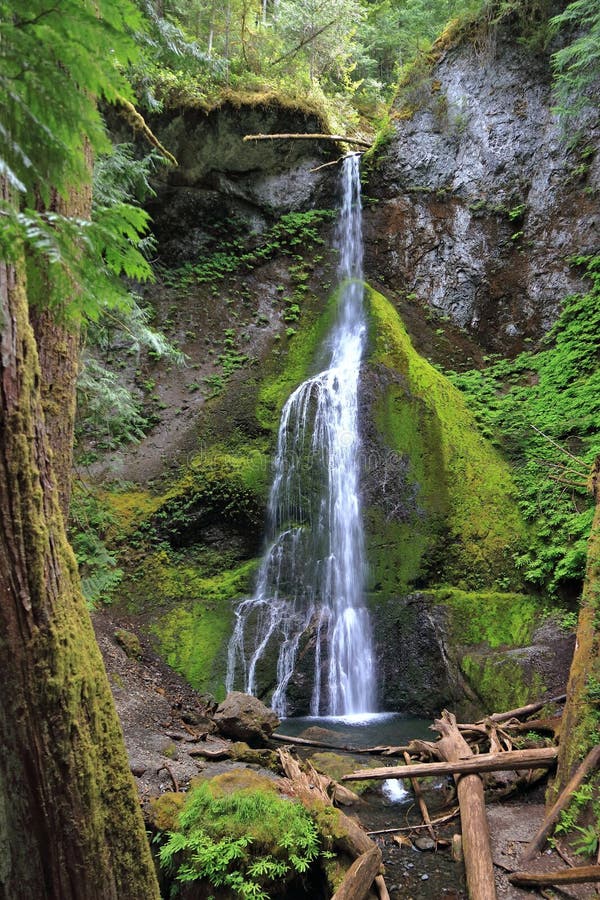
Olympic_Park.
Frequently Asked Questions
Frequently Asked Questions for Olympic Park Visitors
-
What is the best time to visit Olympic Park?
The ideal time to explore Olympic Park is during the summer months, particularly from late June to early September. This period features warm temperatures, blooming wildflower meadows, and optimal hiking conditions. If you want to witness the vibrant wildflowers, aim for the first couple of weeks in August. -
Are there any entrance fees for Olympic Park?
Yes, there is an entrance fee to access Olympic Park. As of now, the fee for a private vehicle is around $30, which grants access for seven consecutive days. Consider purchasing an America the Beautiful Pass if you plan to visit multiple national parks, as it covers entrance fees for over 2,000 sites. -
What are some must-visit attractions in Olympic Park?
Some of the top attractions include Hurricane Ridge for stunning mountain views, the Hoh Rain Forest for its unique flora, Sol Duc Falls for picturesque waterfalls, and Rialto Beach for its rugged coastline. Don’t miss hiking trails like the Obstruction Point Trail and Mount Storm King for breathtaking panoramas. -
Is it possible to camp in Olympic Park?
Absolutely! Olympic Park offers various campgrounds, including the popular Deer Park Campground, which features fire pits and picnic tables. Reservations are recommended, especially during peak season, as spots can fill up quickly. -
What should I pack for my visit to Olympic Park?
Bring layers of clothing to accommodate varying weather conditions, especially if you plan to hike. Essential items include sturdy hiking boots, a water bottle, sunscreen, insect repellent, and a camera to capture the stunning landscapes. Don’t forget a daypack for snacks and personal items! -
Can I take my dog to Olympic Park?
Pets are allowed in specific areas of Olympic Park, but they must be kept on a leash at all times. However, dogs are not permitted on most trails or in the backcountry. Be sure to check the park’s regulations to ensure a safe and enjoyable visit for both you and your furry friend. -
How do I get to Olympic Park?
Olympic Park is located on the Olympic Peninsula in Washington State. The most common way to reach the park is by car. From Seattle, take a ferry to Bainbridge Island or drive around Puget Sound. Follow Highway 101 to access the park’s various entrances, with the Port Angeles entrance being the most popular. -
Are there guided tours available in Olympic Park?
Yes, there are several guided tour options available for visitors. These can range from ranger-led hikes to organized tours that include transportation. Guided tours can enhance your experience by providing insights into the park’s unique ecology, history, and geology. Check the park’s official website for current offerings and schedules.
Final Thoughts on Your Trip
As your journey through Olympic Park comes to a close, take a moment to reflect on the awe-inspiring experiences that have unfolded before you. From the breathtaking panoramas atop Hurricane Ridge to the tranquil serenity of Lake Crescent, every corner of this remarkable park offers a unique glimpse into nature’s grandeur. You’ve walked through lush forests, gazed upon stunning waterfalls, and perhaps even spotted a majestic Roosevelt elk grazing in the wild. Each trail you hiked and every view you savored has woven a tapestry of unforgettable memories.
The rhythm of the waves at Rialto Beach, the vibrant colors of wildflowers in bloom, and the starry skies overhead remind us of the beauty that exists in the world, waiting to be explored. As you prepare to leave, carry with you the spirit of adventure and the tranquility that only nature can provide. Whether you’re sharing stories with friends or planning your next getaway, the magic of Olympic Park will surely linger in your heart, inspiring you to seek out the beauty in every journey ahead. Safe travels and may your future adventures be filled with wonder!